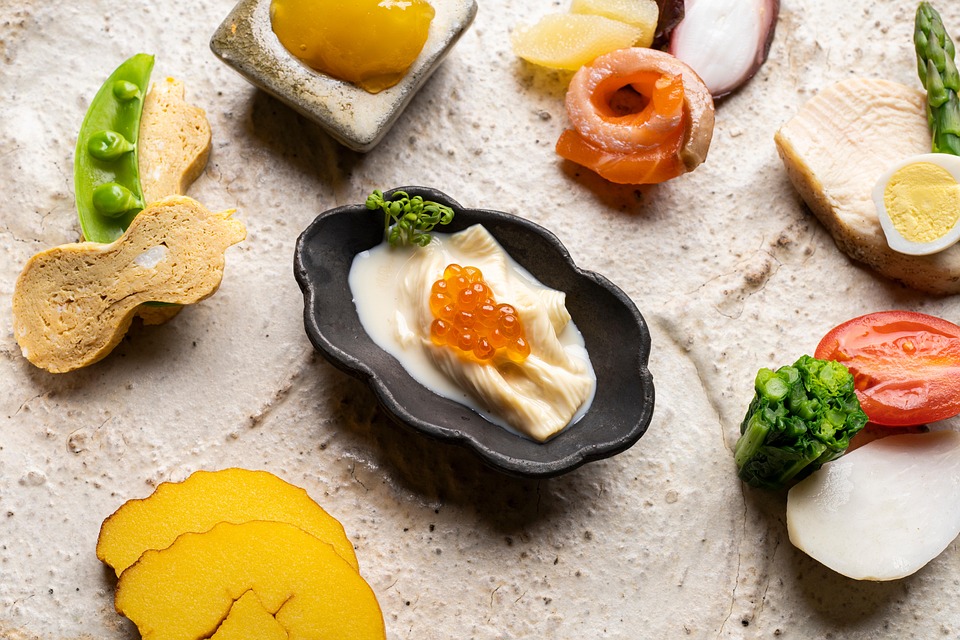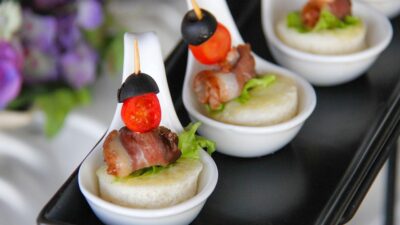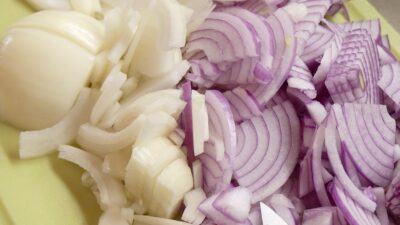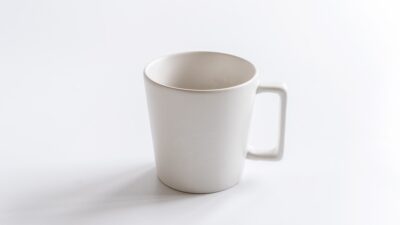Food is not just about taste; it’s also about presentation. Beautifully plated dishes can elevate a meal from ordinary to extraordinary, turning simple gatherings into unforgettable experiences. Whether you’re a professional chef or a home cook looking to impress your guests, mastering the art of plating can make all the difference. Here’s a guide to essential plating techniques that will wow your guests and transform your culinary creations into visual masterpieces.
1. Understand the Basics of Plating
Before diving into the more complex techniques, it’s crucial to understand the fundamentals of plating. The goal is to create a dish that is visually appealing while highlighting the core ingredients. Keep these tips in mind:
-
Balance: Use colors, shapes, and textures to create a harmonious look. Balance heavy items with light ones, and consider how different elements visually complement each other.
-
Focal Point: Every plate should have a focal point that draws the eye. This could be the main protein, a vibrant sauce, or a colorful garnish.
- Negative Space: Don’t feel compelled to fill every inch of the plate. Negative space helps to emphasize the food and can make the dish feel more elegant.
2. Choose the Right Plate
Selecting the right plate can dramatically impact your plating style. Consider the following:
-
Size: A plate that is too large can make portions appear small, while a small plate may make a meal feel cramped. Aim for a mid-range size that allows for some negative space.
-
Color: White plates are a classic choice, allowing colorful ingredients to stand out. However, unique colors can also add character; just ensure they complement your food.
- Shape: Round plates are traditional, but square or rectangular plates can add a modern twist.
3. Layer Your Ingredients
Creating depth and dimension in your plating can engage the eyes and heighten the sensory experience:
-
Stack or Layer: Rather than placing everything flat on the plate, try stacking or layering ingredients. This technique adds height and intrigue.
- Use Sauces Wisely: Instead of merely drizzling sauce over your dish, consider creating a swoosh on the plate or using a squeeze bottle for precise designs.
4. Incorporate Texture
Different textures can enhance the visual appeal and overall eating experience:
-
Contrasting Textures: Pair creamy sauces with crunchy elements like nuts or crispy vegetables. This not only adds visual interest but also contrasts flavors in a delightful way.
- Garnishes: Fresh herbs, microgreens, or edible flowers can introduce vibrant colors and textures, making the dish more visually appealing.
5. Pay Attention to Detail
Details matter when it comes to plating. Here are a few tips to ensure your dish is presented beautifully:
-
Clean the Edges: Before serving, wipe any drips or smudges off the plate. A clean edge provides a polished look.
-
Consistent Sizing: Cut ingredients uniformly to create a cohesive look. Whether it’s vegetables, proteins, or garnishes, uniformity enhances the overall aesthetic.
- Garnish Thoughtfully: Select garnishes that complement the dish in flavor and appearance. A sprig of parsley may be classic, but something like fried shallots or a dusting of edible gold can elevate the presentation.
6. Experiment and Practice
The best way to master plating techniques is through experimentation and practice. Here are some ideas to help you get started:
-
Take Inspiration: Look at cookbooks, Instagram, or food blogs for inspiration. Analyze what catches your eye and think about how you can incorporate those elements into your own plating style.
-
Play with Colors: Use vibrant, colorful ingredients to create contrast. A pop of color can make even a simple dish look stunning.
- Try Thematic Plating: Consider the theme of your meal—rustic, elegant, or casual—and choose plating techniques that match the atmosphere. For instance, a picnic could embrace a more rustic presentation, while a formal dinner may require a sleek, modern approach.
Conclusion
Plating is an art that combines culinary skills with a creative eye. By understanding the basics, experimenting with techniques, and paying attention to detail, you can create visually stunning dishes that will impress your guests. Remember, the goal is not only to please the palate but also to engage the eyes. So, the next time you’re in the kitchen, put on your creative hat and let your plating skills shine. After all, we eat with our eyes first!



